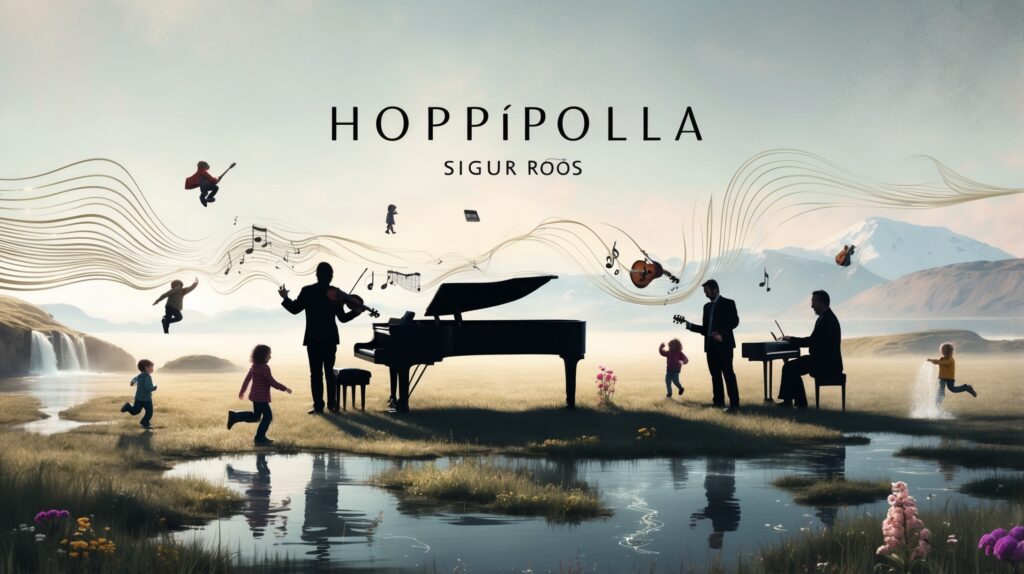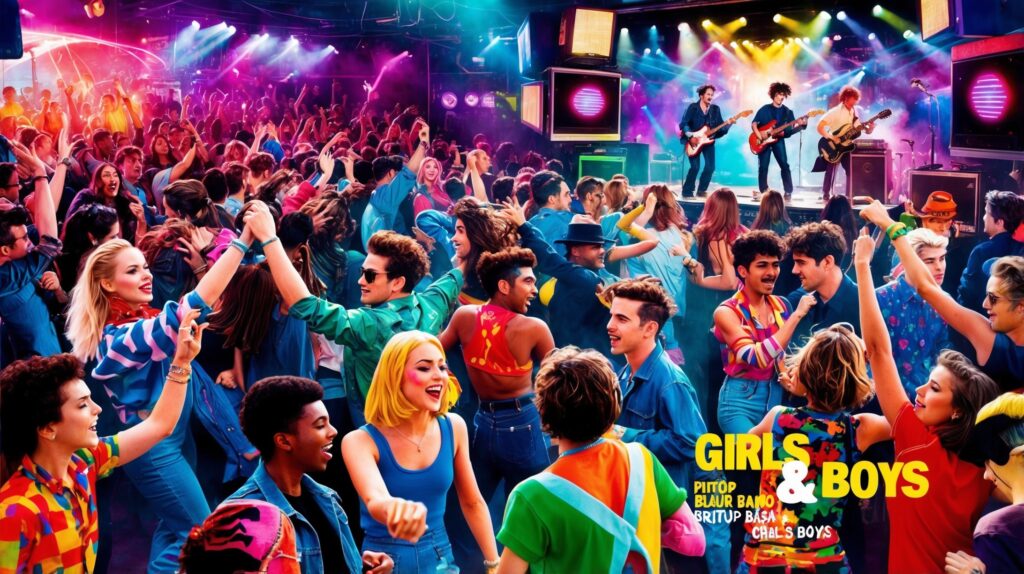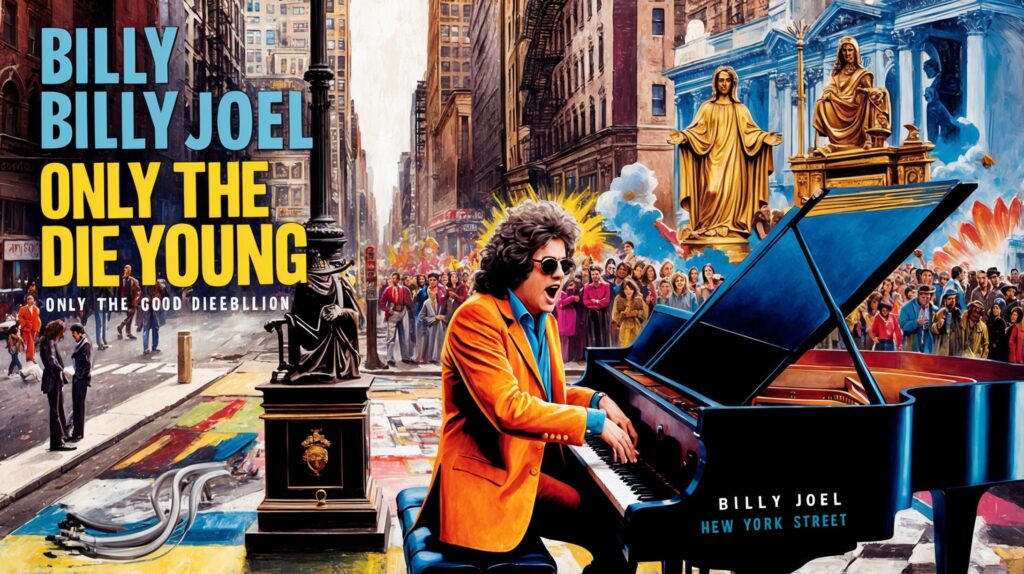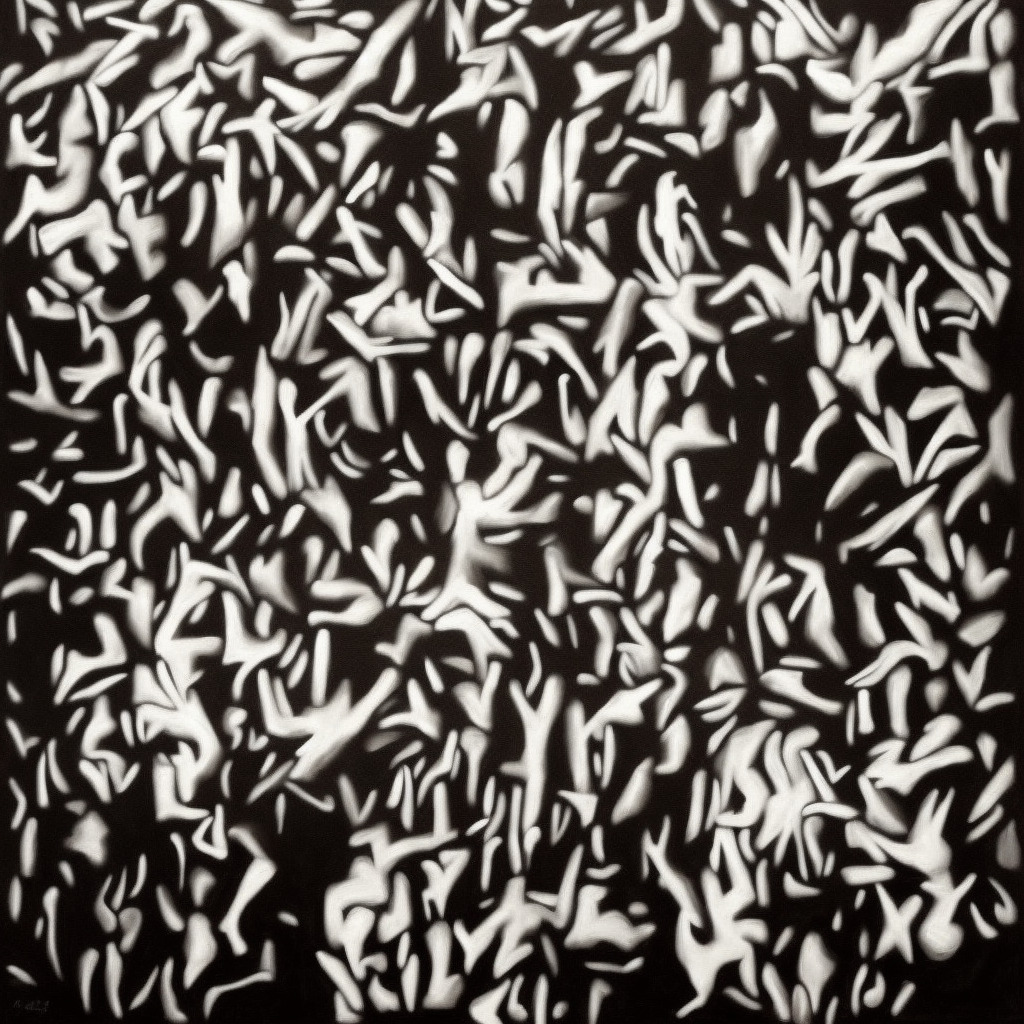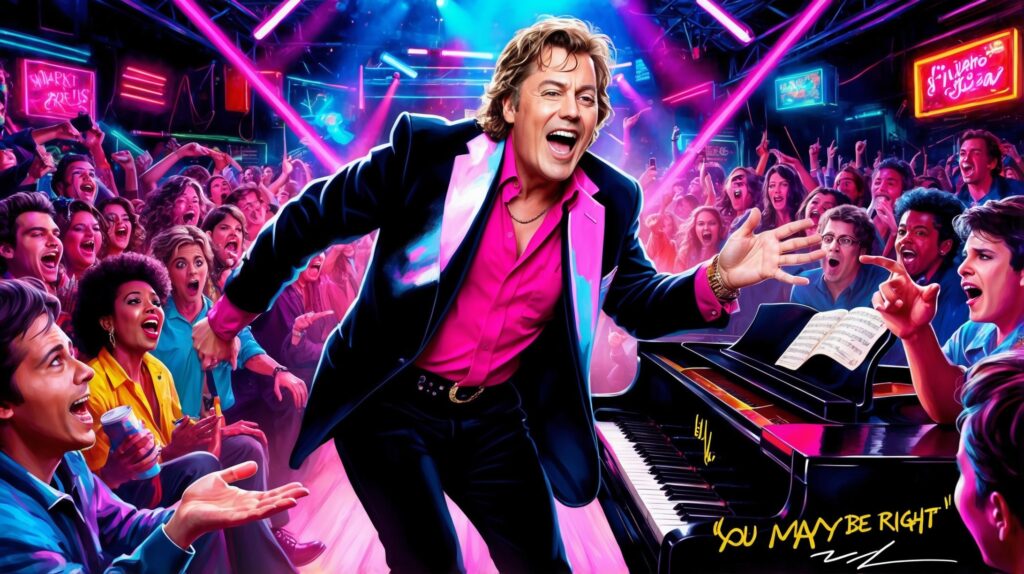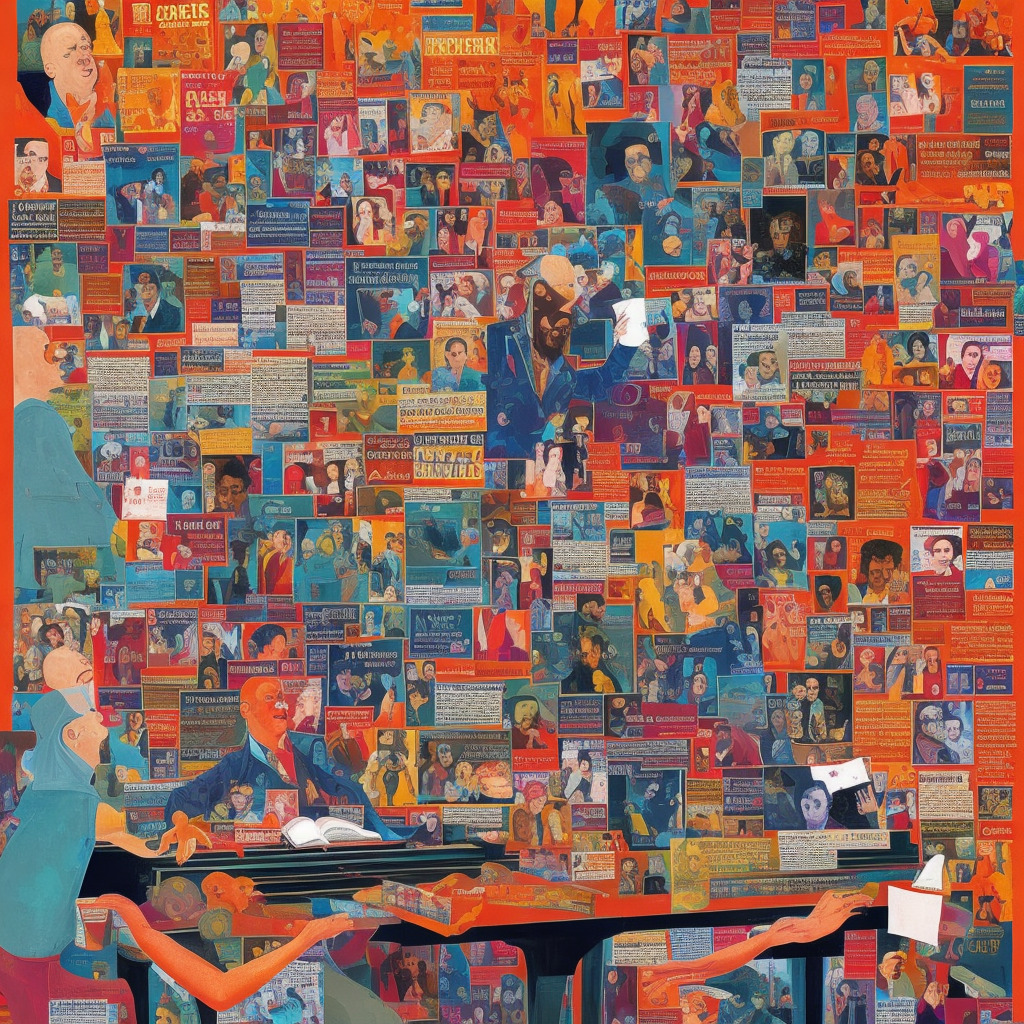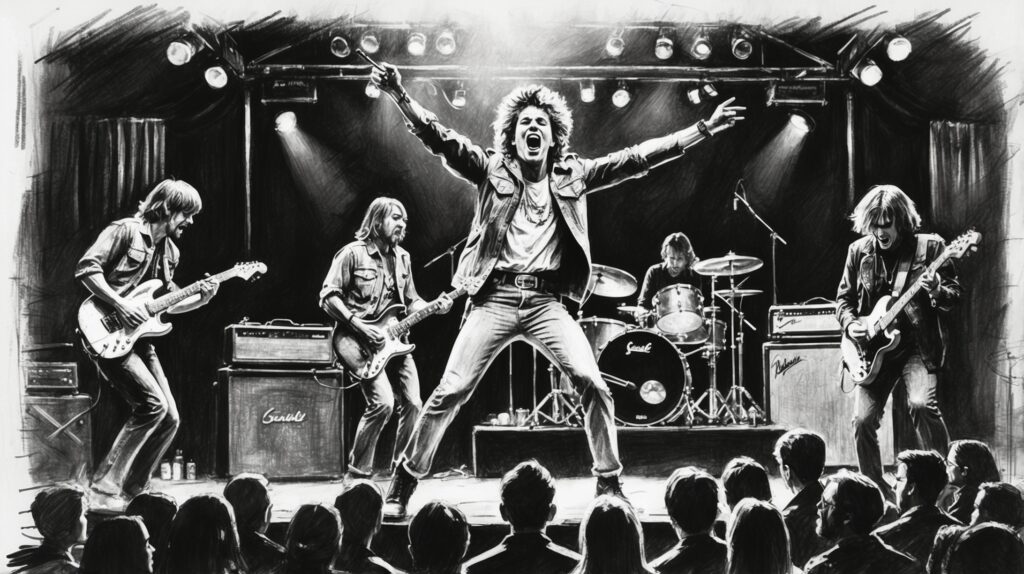The Ethereal Soundscapes of Sigur Rós
Explore the majestic journey of Sigur Rós as they transcend musical norms, with ‘Hoppípolla’ standing as a testament to their ethereal and groundbreaking sound.
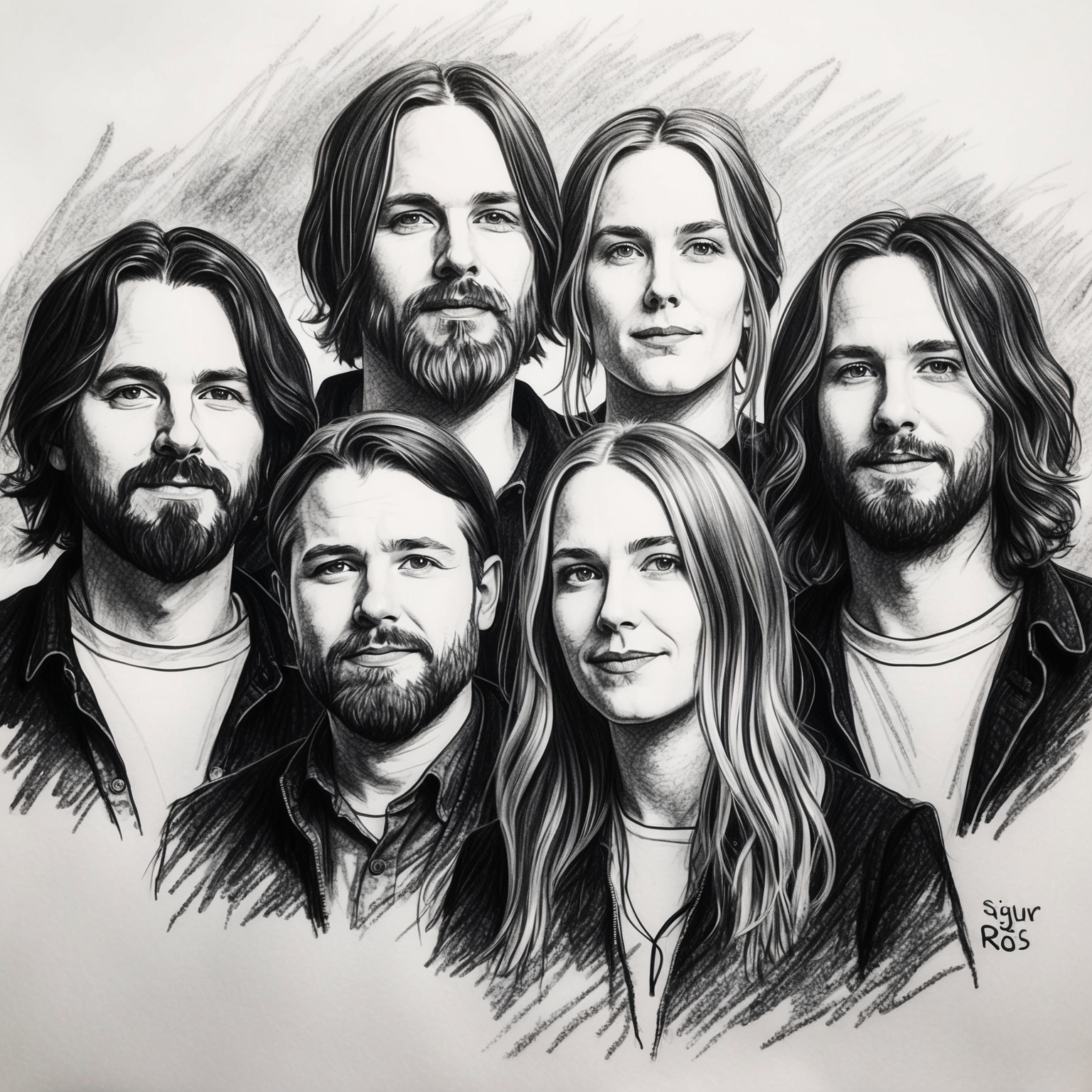
Sigur Rós, an Icelandic post-rock band with a distinctive ambient sound, has had a profound impact on the global music scene since their formation in 1994. Known for their ethereal soundscapes, their music often transcends language, weaving in majestic orchestral elements, reverb-drenched guitar work, and Jónsi Birgisson’s otherworldly falsetto. ‘Hoppípolla’, released in 2005, quickly became a signature track for the band, embodying their innovative spirit and ability to evoke deep emotional responses through their music.
The band’s early years were marked by exploration and innovation. Formed in Reykjavík, Sigur Rós started with the release of their debut album, ‘Von,’ which established them as pioneers of the ambient rock genre. However, it was their third album, ‘Ágætis byrjun,’ that catapulted them to international fame. This album was a turning point in their career, garnering widespread critical acclaim and paving the way for future successes, including the release of ‘Hoppípolla’.
During the era of ‘Takk…’, the album from which ‘Hoppípolla’ originates, Sigur Rós was heavily immersed in their unique creative process, often hinting at collaborations, but primarily focusing on their core sound. The period was marked by a rich vein of creativity, pushing the boundaries of traditional rock music with ambient drifts and narrative compositions. Both the reception of ‘Hoppípolla’ and the album highlight the band’s role in shaping the post-rock genre and their ability to touch listeners’ hearts across the globe.
Inside the Musical Mind of Sigur Rós: Beyond the Notes
Explore the intricate composition process of “Hoppípolla” by Sigur Rós, highlighting the collaborative effort and diverse influences that contribute to their unique sound.
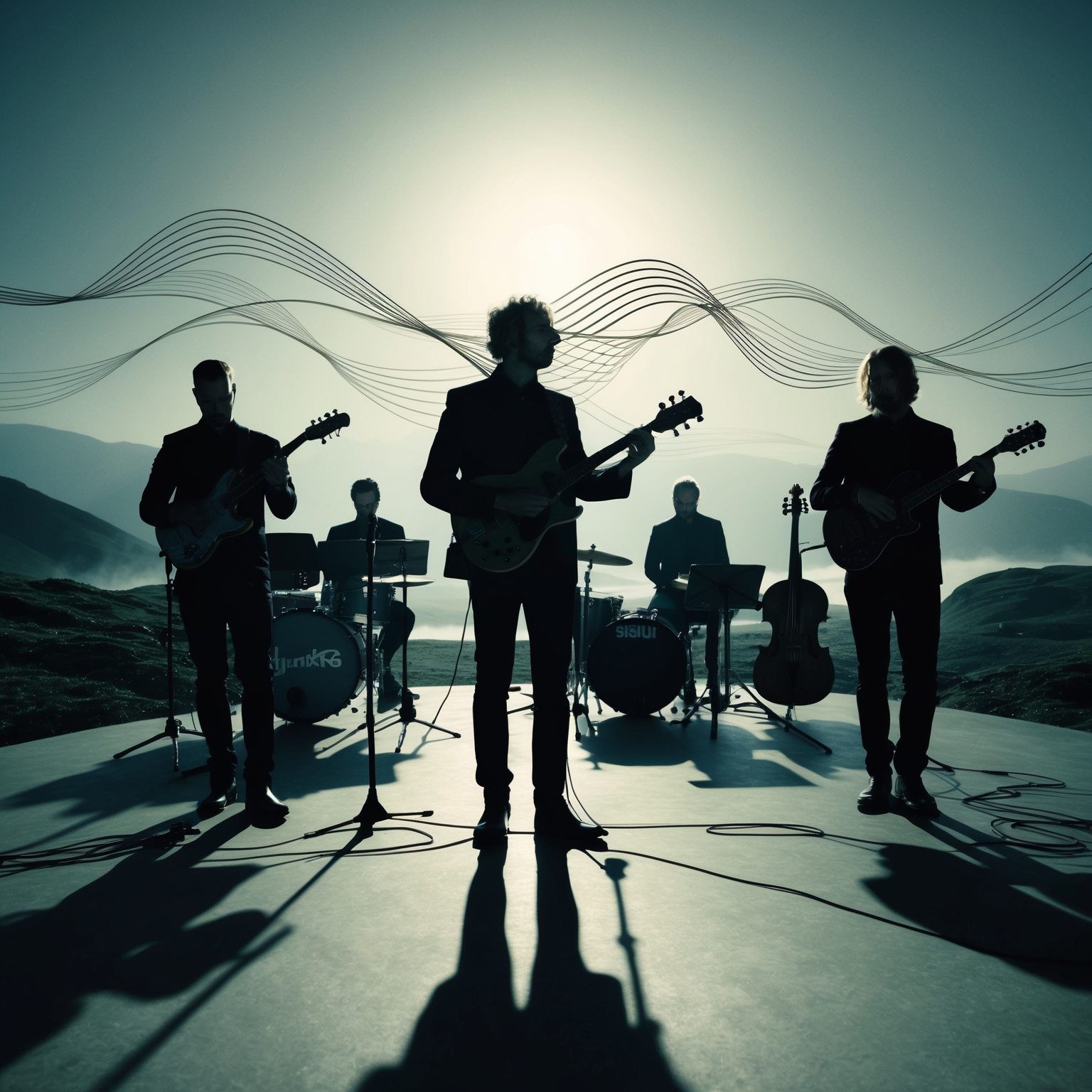
Sigur Rós is not just a band but a musical entity that encapsulates the ethereal sounds of Iceland. The composition of “Hoppípolla” reflects the band’s collective genius, comprised of talented musicians who work in tandem to craft their unique sonic landscape. Central to this is Jónsi Birgisson, Sigur Rós’s frontman whose haunting falsetto underpins many of their compositions. While Sigur Rós’s music is a collaborative effort, Jónsi’s compositional input often forms the backbone of their songs, lending them an evocative and celestial quality.
The band’s music stretches beyond traditional genres, embracing post-rock while being heavily influenced by classical and ambient elements. Their distinctive sound is molded by the rich and varied backgrounds of each band member. For instance, Jónsi’s influences are eclectic, ranging from avant-garde to minimalistic contemporary. This blend of influences enables Sigur Rós to create music that transcends conventional structures, which can clearly be seen in “Hoppípolla.”
Collaboration is a hallmark of Sigur Rós’s songwriting process, as each member brings their own musical expertise and influences to the table. The interplay between Jónsi’s vocals, Orri Páll Dýrason’s percussion, and Georg Hólm’s bass guitar creates a synergy that is palpable in “Hoppípolla.” Their collective input ensures that each track is a microcosm of the band’s shared vision, facilitating the seamless fusion of lyrics and music.
Sigur Rós’s role in composing “Hoppípolla” is nothing short of impactful. The way the music crescendos alongside the repetitive, hopeful lyrics creates a crescendo that resonates both sonically and emotionally with listeners. It is the band’s ability to weave together such intricate soundscapes that takes their compositions from mere songs to profound musical experiences.
Acclaim and Influence: How ‘Hoppípolla’ Resonated Across the Arts
Hoppípolla’ by Sigur Rós may not have traditional awards, but its significant influence across covers and media showcases its cultural impact.
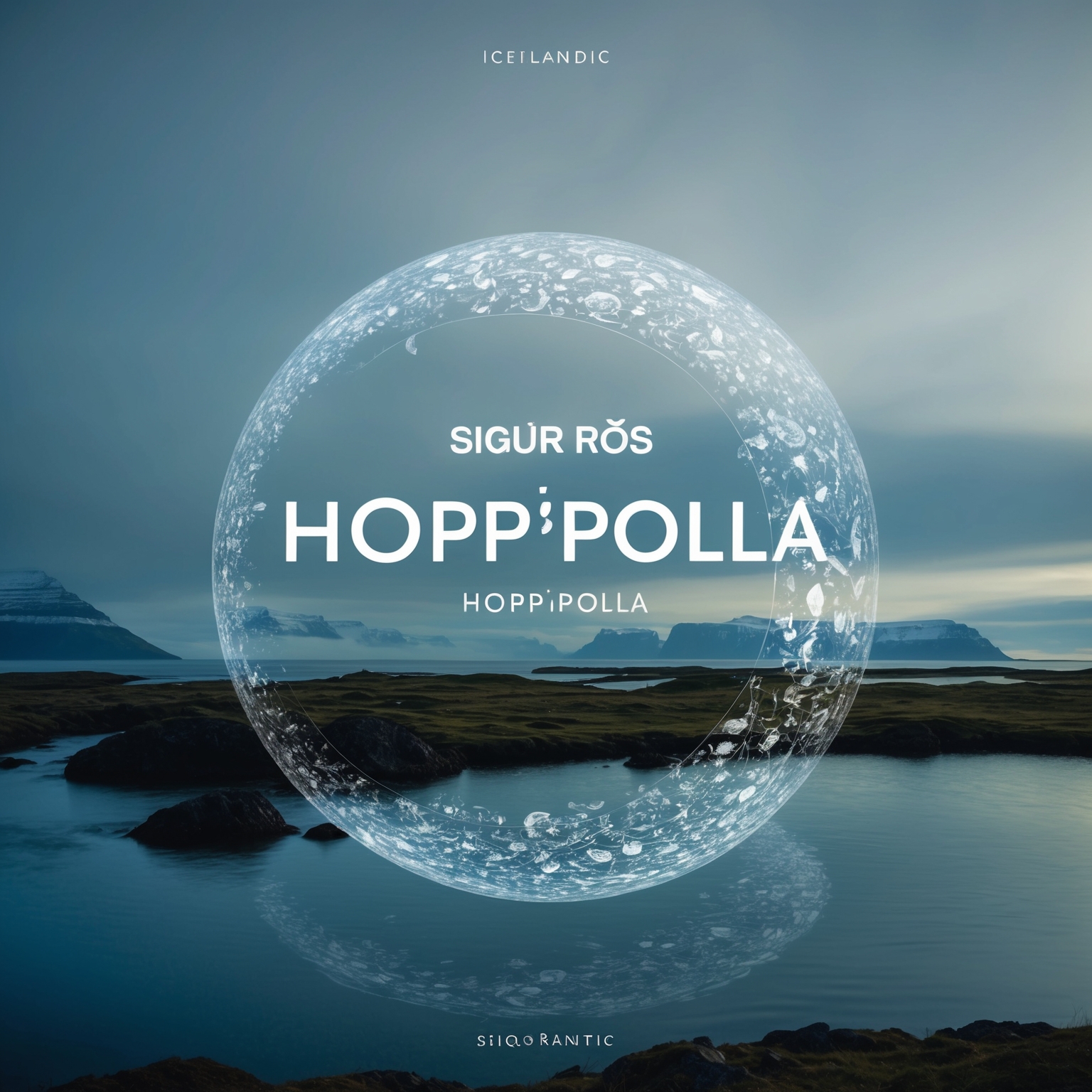
‘Hoppípolla,’ a captivating composition by the Icelandic post-rock band Sigur Rós, has received considerable acclaim since its release. While the song itself hasn’t garnered awards in the traditional sense, its widespread influence and integration into various media platforms are noteworthy. Its ethereal soundscapes have resonated deeply with audiences worldwide, cementing its place in popular culture.
Over the years, ‘Hoppípolla’ has been covered by several artists, demonstrating its versatility and universal appeal. One notable cover is by the band ‘We Are Scientists,’ who infused the song with their unique indie rock energy, providing a fresh take while maintaining the original’s emotional depth. Another interesting rendition came from ‘Chapel Club,’ known for their melancholic and atmospheric sound, highlighting the song’s emotive potential.
The song’s cinematic quality has led to its frequent inclusion in films, television shows, and video games. It featured prominently in the soundtrack for the BBC’s ‘Planet Earth,’ enhancing the series’ epic portrayal of the natural world and bringing the song to an even broader audience. Additionally, it was used in ‘Children of Men,’ a compelling dystopian film, where its hopeful sound provided a poignant contrast within the narrative. This cross-medium appeal has contributed to a lasting legacy, ensuring that ‘Hoppípolla’ remains an auditory staple in storytelling.
The Global Ascension of ‘Hoppípolla’
Explore how ‘Hoppípolla’ by Sigur Rós transcended its ethereal roots to achieve unexpected chart success and cultural acclaim, cementing the band’s global impact.
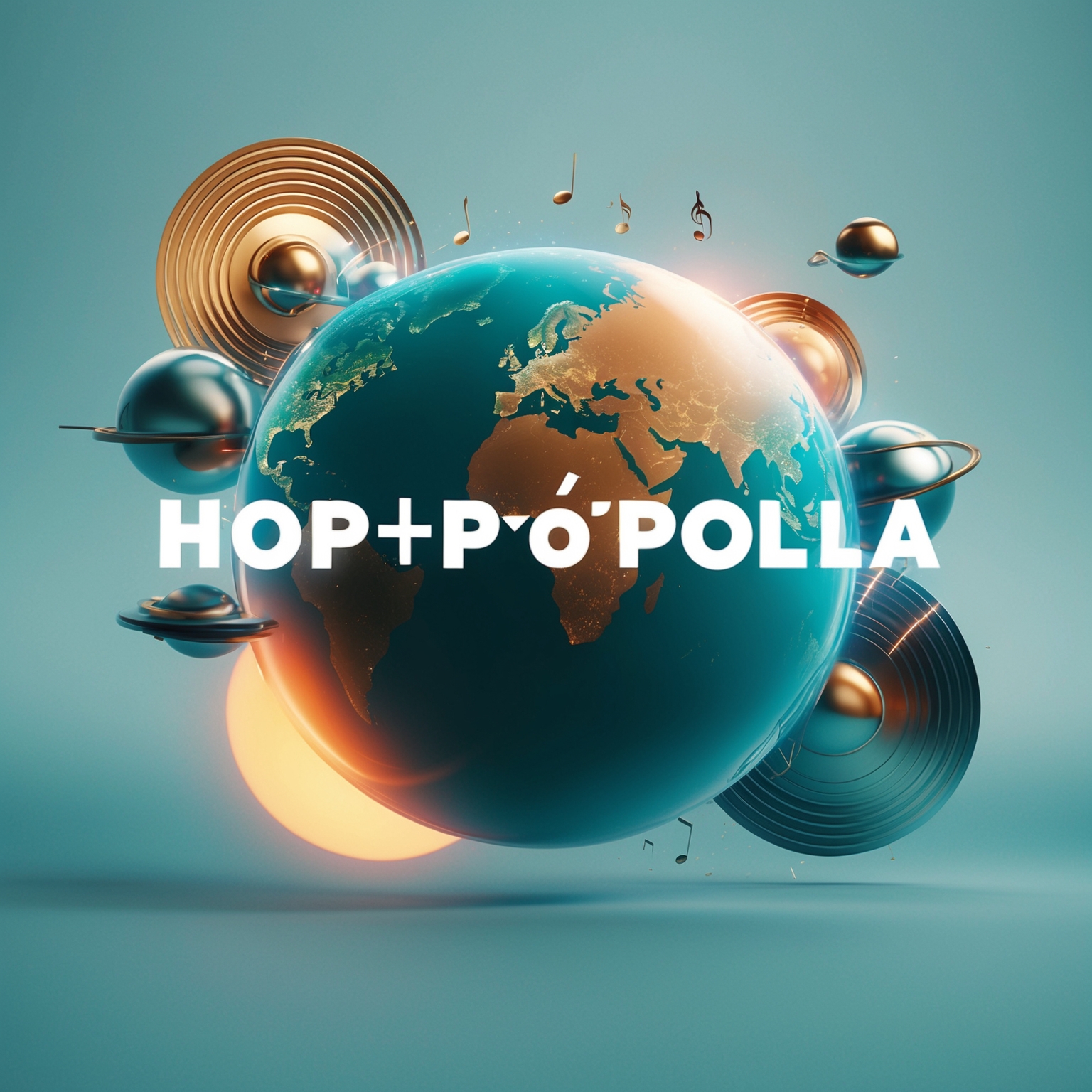
Upon its release in November 2005, “Hoppípolla” by the Icelandic band Sigur Rós took a unique path on the charts, becoming an enchantingly subtle powerhouse in the music world. Initially, “Hoppípolla” may not have seemed like an obvious candidate for chart-topping success, yet it resonated strongly with audiences. The single reached its peak position at number 24 on the UK Singles Chart, marking a significant achievement for a song sung entirely in Icelandic and Hopelandic languages.
Compared to other charting hits of the time, such as the English and American pop ballads that dominated airwaves, “Hoppípolla” stood out for its ethereal quality and distinct musical architecture. Its commercial performance was a milestone for Sigur Rós, ushering in a new wave of global recognition for the band. It wasn’t the band’s first breakthrough—it followed their earlier successes—but it solidified their presence on the international stage, complementing their pioneering status within post-rock genres.
The song’s popularity was further propelled by strategic marketing efforts, including its inclusion in various films and TV series, which broadened its exposure beyond traditional music platforms. The ethereal and cinematic quality of “Hoppípolla” was embraced by filmmakers and advertisers, further embedding it into contemporary culture. Critically, the song was celebrated for its emotive power and has since been regarded as an emblematic piece of the early 2000s music landscape, capturing hearts across the globe with its uplifting and dreamlike soundscape.
Visual Storytelling in ‘Hoppípolla’
The music video for ‘Hoppípolla’ by Sigur Rós turns nostalgic storytelling into a visual marvel, pairing themes of innocence and age with Iceland’s breathtaking landscapes.

The music video for ‘Hoppípolla’ by Sigur Rós is a stunning visual accompaniment that breathes life into the ethereal beauty of the song. Directed by Arni & Kinski, the video stands out for its captivating narrative that marries childhood nostalgia with the simple joys of life. Set in a quaint Icelandic village, it follows a group of elderly people who reclaim their youthful exuberance through playful mischief, capturing the essence of innocence and wonder.
The themes explored in the video include the juxtaposition of age and timeless joy, highlighting how youthful spirit transcends the constraints of time. The cinematography beautifully encapsulates Iceland’s serene landscapes, enhancing the song’s atmospheric and expansive sound. It’s a celebration of life’s small pleasures, designed to not only evoke smiles but also touch on the universal theme of cherishing innocence. This potent combination of visual storytelling and musicality contributed significantly to the song’s popularity, birthing countless tributes and fan-made versions online.
Reception-wise, the music video has been praised for its heartwarming and innovative approach. Critics appreciated its originality and the way it complements the dreamlike soundscapes of Sigur Rós. It is considered one of the band’s most beloved videos, deeply resonating with audiences and adding layers of meaning to an already rich song.
Exploring the Musical Composition of ‘Hoppípolla’
Dive into the exquisite musical structure of ‘Hoppípolla’, exploring its key, tempo, and instrumentation, as well as its significance in Sigur Rós’s evolving discography.
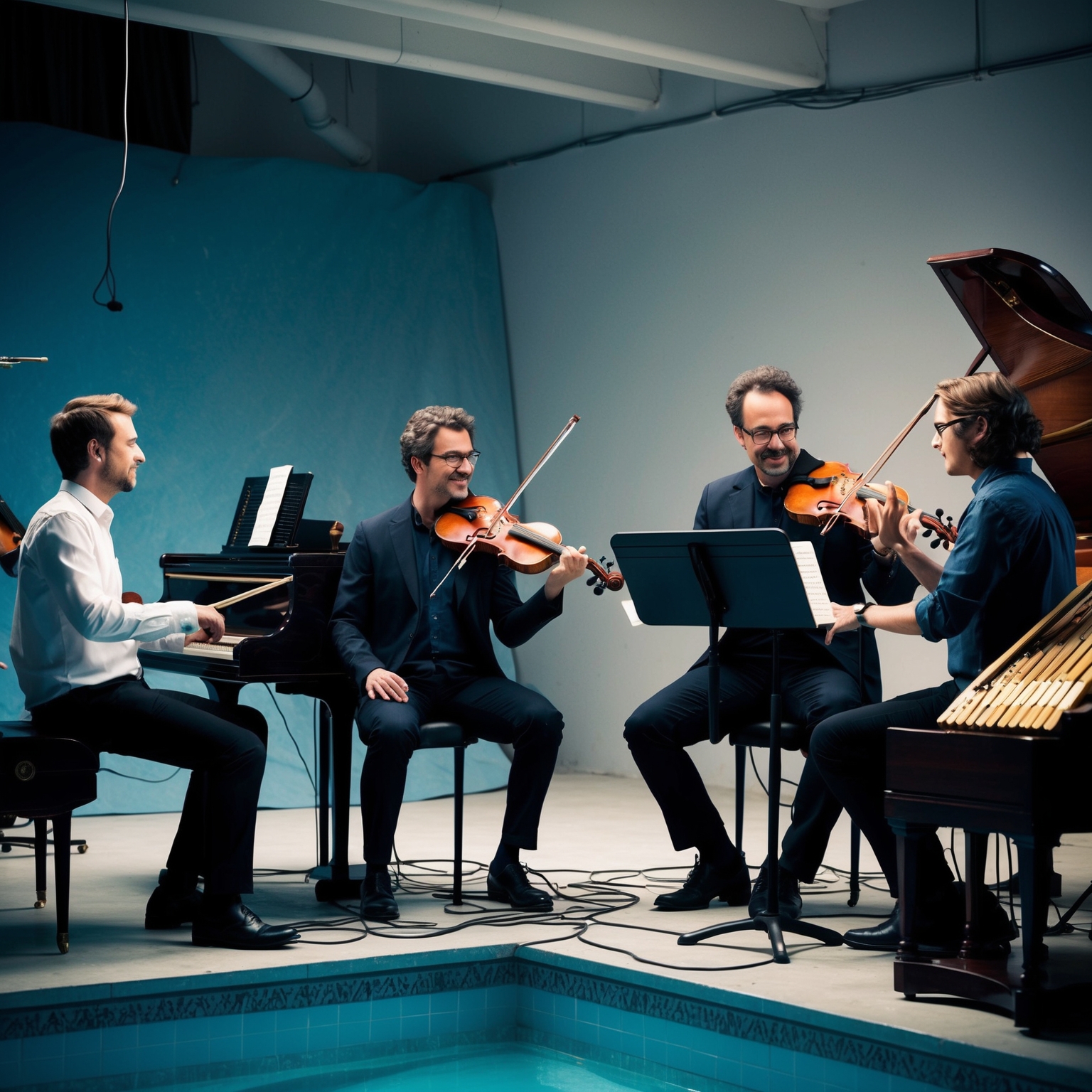
‘Hoppípolla’ by Sigur Rós is a stunning example of the band’s ability to weave emotional depth with musical complexity. The song is written in the key of A major, and its chord structure is relatively simple, featuring a rich, evolving progression that provides a cohesive base for the lush instrumentation. Its tempo is moderate, with a steady rhythm that mirrors the song’s transcendent atmosphere.
The melody of ‘Hoppípolla’ is anchored by Jónsi’s ethereal vocals, which are layered with a harmonic richness characteristic of Sigur Rós’s work. The song builds dynamically, starting with gentle piano notes and swelling with orchestration that includes strings, glockenspiel, and guitar. This crescendo creates an immersive experience, where each instrument contributes uniquely; the soaring violin and cello lines, for instance, add a poignant emotional layer.
In the context of Sigur Rós’s discography, ‘Hoppípolla’ stands out as a pivotal track that exemplifies a period of creative evolution for the band. It represents a bridge between their earlier experimental sounds and their later more polished, mainstream appeal. Compared to earlier works, such as those on the album ‘Ágætis byrjun’, ‘Hoppípolla’ displays a maturation in melodic structure and thematic exploration, echoing a time when the band was solidifying its distinctive soundscape.
The song was recorded at Sundlaugin Studio, a converted swimming pool in Iceland, which is renowned for its unique acoustics. Anecdotes from the recording sessions reflect the band’s collaborative spirit and their innovative use of space and sound, enhancing the track’s atmospheric qualities.
Lyrical Themes and Emotional Resonance of Hoppípolla
The lyrics of ‘Hoppípolla’ by Sigur Rós transcend language, exploring themes of innocence and joy. Through vivid imagery and simplicity, the song resonates universally, inviting individual interpretation while evoking nostalgia and happiness.
Hendumst í hringi
Höldumst í hendur
Allur heimurinn óskýr
nema þú stendur
Rennblautur
Allur rennvotur
Engin gúmmístígvél
Hlaupandi í okkur ?
Vill springa út úr skel
Vindur í
og útilykt ? af hárinu þínu
Ég lamdi eins fast og ég get
með nefinu mínu
Hoppa í poll
Í engum stígvélum
Allur rennvotur(rennblautur)
Í engum stígvélum
Og ég fæ blóðnasir
En ég stend alltaf upp
(Hopelandish)
Og ég fæ blóðnasir
En ég stend alltaf upp
(Hopelandish)
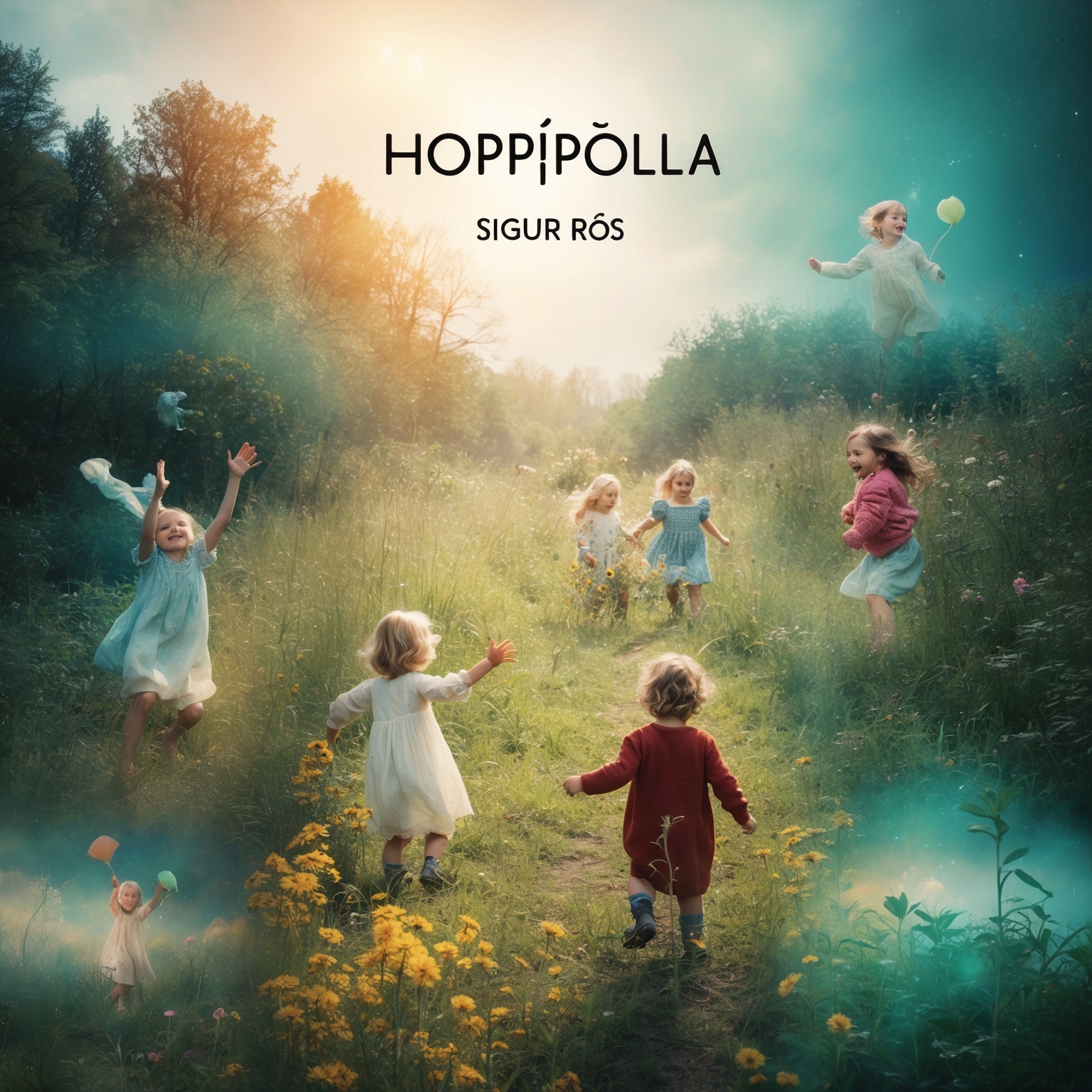
Sigur Rós’s ‘Hoppípolla’ is a song that transcends language barriers, primarily because of its evocative themes and thoughtfully crafted lyrics. Although some audiences might find the Icelandic lyrics unfamiliar, the core message is universally accessible, revolving around innocence, joy, and the profound beauty in small moments of life. The title itself translates to ‘hopping in puddles,’ setting a whimsical tone that harkens back to the carefree days of childhood.
The narrative within the lyrics is dreamlike and filled with imagery that evokes a sense of nostalgia. There is no definitive story articulated through the verses, which allows listeners the freedom to create their own interpretations. This open-ended narrative style, told from an omniscient perspective, contributes to the song’s impact, providing a canvas for the listener’s imagination. It invites one to reminisce about moments of joy and spontaneity, coaxing a childlike sense of wonder from within.
Utilizing literary devices like vivid imagery and metaphors, Sigur Rós manages to enhance the emotive power of their lyrics. Descriptive lines create scenes of nature’s beauty intertwining with human emotion, presenting a fabric woven from feelings of exuberance and tranquility. While comparatives with their other works reveal a familiar ethereal and atmospheric quality, ‘Hoppípolla’ stands out by encapsulating a more buoyant and uplifting spirit.
Despite being sung in Icelandic, ‘Hoppípolla’ resonates with audiences worldwide, eliciting emotions that transcend linguistic boundaries. The lyrics’ simplistic appeal lies in delivering raw emotions through uncomplicated imagery, a form often reminiscent of poetry. Fans often interpret the lyrics as a celebration of life’s simple pleasures, carrying personal and universal connotations that hit a chord with many, regardless of geographic or cultural differences.
Dive into nostalgia with Sigur Rós’s ‘Hoppípolla’! Originally called The Jumping Puddles Song, it turns Icelandic rain into pure musical magic! ??️ #SigurRós https://bit.ly/42lGIw3
Click to Tweet

